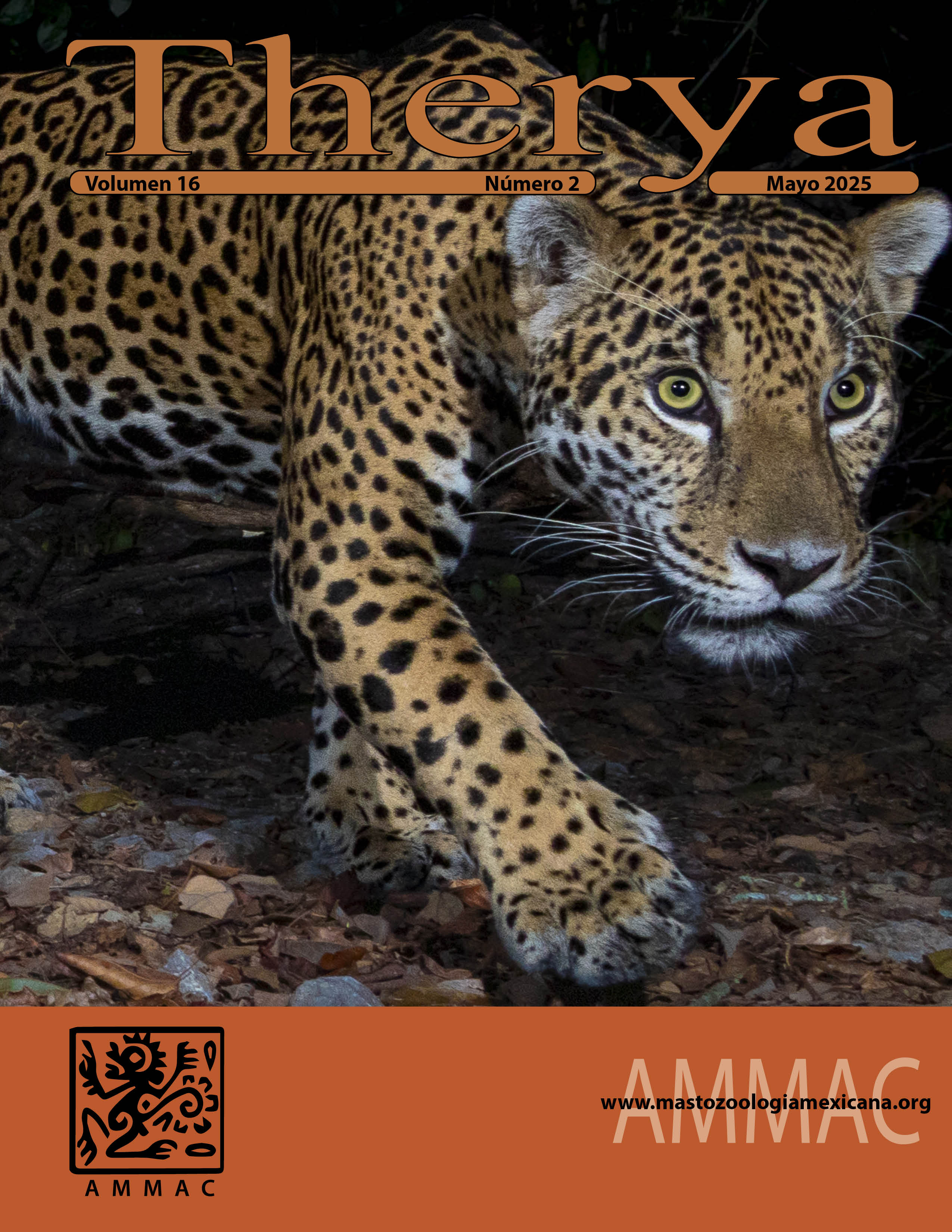Delimitación de unidades de manejo regional para el borrego cimarrón en Baja California. Una aplicación del modelo de distribución potencial de especies
Palabras clave:
borregos silvestres, especies de caza mayor, manejo de vida silvestre, máxima entropía, modelo de nicho ecológico, Ovis canadensisResumen
Los modelos de distribución geográfica potencial de especies son herramientas para tomar decisiones sobre el manejo de las poblaciones de vida silvestre, especialmente de especies que ocupan grandes extensions de area, como el borrego cimarrón. En el presente estudio se generó un modelo de distribución geográfica potencial que puede ser utilizado para el manejo del borrego cimarrón en el estado de Baja California, México. El modelo se generó con el algoritmo de máxima entropía para estimar el área de distribución geográfica de la especie. Las variables utilizadas como predictoras fueron climáticas, de relieve y de vegetación. Mientras que, los sitios conocidos donde se registró al borrego cimarrón se obstuvieron de conteos aereos realizados en Sierra Juárez en 2012, y a nivel regional en 2021, por Romero et al. (2024). Asimismo, se incuyeron registros de observaciones terrestres reportados por Ruiz et al. (2023) en Sierra Juárez en 2016; en la Sierra de la Asamblea y en Calamajué en 2021; y en Sierra Santa Isabel y Sierra Juárez en 2022. Asi como, del Sistema Global de Información sobre Biodiversidad. El modelo de distribución geográfica reveló que la especie en el estado de Baja California se distribuye a lo largo del macizo montañoso del Golfo de California, en una superficie aproximada de 317,160 ha. Las variables que contribuyeron más en la construcción del modelo fueron la rugosidad, el tipo de vegetación y la precipitación del trimestre más frío. El modelo de distribución geográfica se utilizó para definir 11 unidades de manejo regional para la especie. Cada una se comparte entre dos o más comunidades agrarias. En Baja California el manejo del borrego cimarrón se debe realizar a partir de programas de monitoreo comunitario, protección del hábitat y aprovechamiento sostenible en los que, se considere la participación de todas las comunidades rurales que poseen terrenos dentro del área de distribución de esta especie.
Descargas
Descargas
Archivos adicionales
Publicado
Cómo citar
Número
Sección
Licencia
La revista THERYA, con base en su política de acceso abierto, permite descargar en forma gratuita el contenido completo de la revista en formato digital. También autoriza al autor a colocar el artículo en el formato publicado por la revista en su sitio web personal, o en un repositorio de acceso abierto, distribuir copias del artículo publicado en formato electrónico o impreso a quien él considere conveniente, y reutilizar parte o la totalidad del artículo en sus artículos o libros futuros, dando los créditos correspondientes. Se utiliza la licencia Creative Commons CC BY-NC-SD. La que se especifica en las publicaciones.










